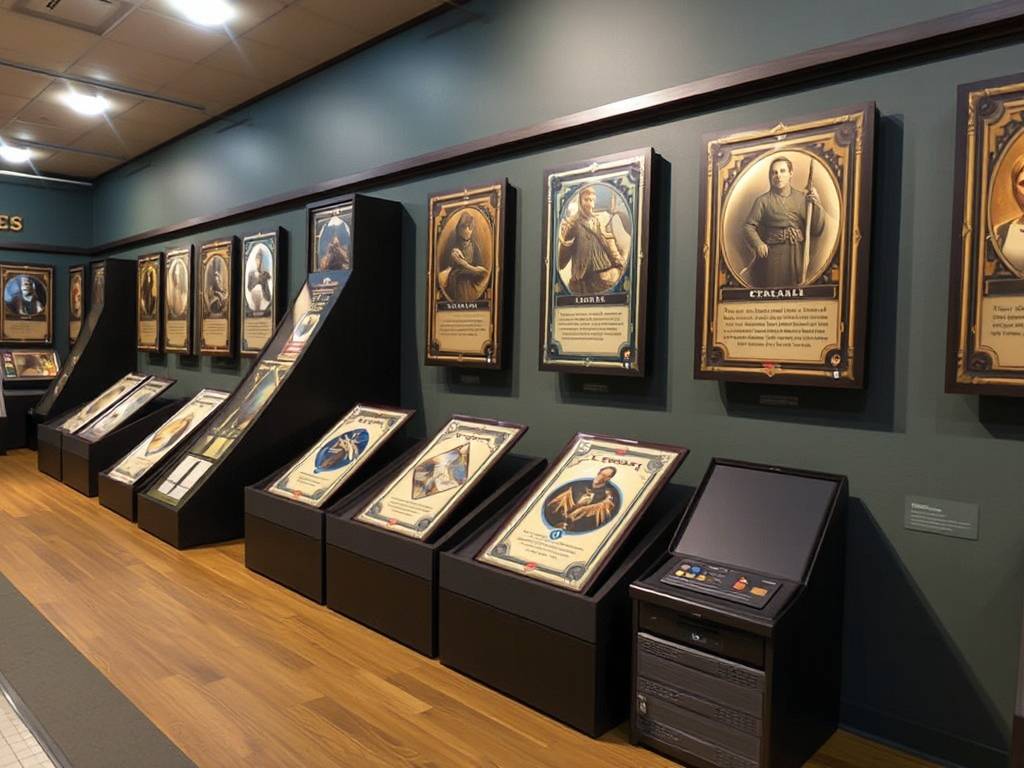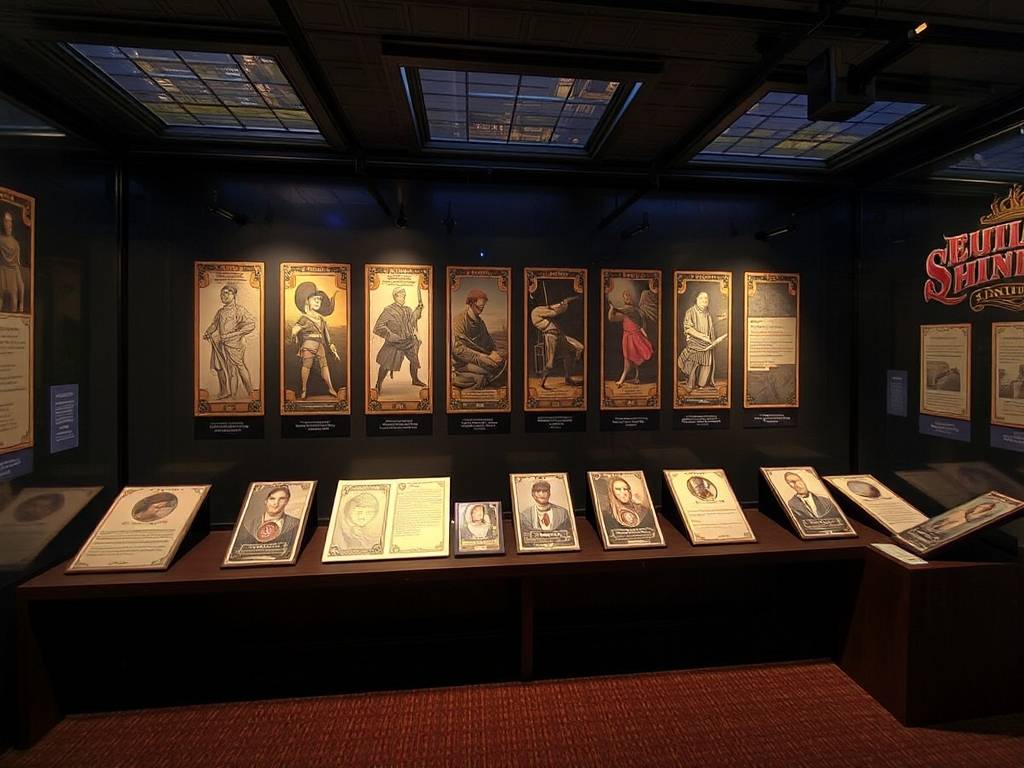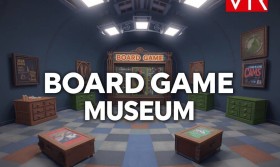A New Deal for History: Exploring the 'Card Game Museum VR' Historical Decks Expansion
Have you ever held history in your hands? I mean truly held it—not just read about it in a book or seen it behind a glass case, but felt the weight and texture of a moment long past. For centuries, playing cards have been more than just tools for games; they are silent witnesses to our social rituals, artistic movements, and political upheavals. They are pocket-sized canvases that tell grand stories. Yet, accessing these fragile artifacts has always been the privilege of a few curators and collectors. Until now.
Welcome to the Card Game Museum VR's latest innovation: the Historical Decks Expansion. This isn't just a simple update; it's a paradigm shift in how we interact with cultural heritage. This immersive VR card game experience transports you from a passive observer to an active participant in the narrative of play. Imagine not just looking at a 15th-century Italian tarot deck, but sitting in a digitally recreated Renaissance studiolo, feeling the virtual vellum under your fingertips as you lay the cards on a marble table. This is the promise of the Historical Decks Expansion—a promise to make the past playable.

So, what exactly does this expansion offer? It’s a meticulously curated, ever-growing collection of historically significant card decks, each one scanned in超高分辨率 (chāo gāo fēnbiàn lǜ - ultra-high resolution) and recreated with painstaking detail within the virtual walls of the Card Game Museum VR. We’re talking about decks that were once the exclusive domain of kings, used for secret diplomacy, or illustrated by master artists whose names are otherwise lost to time. This project goes far beyond a simple digital gallery; it is a full-bodied virtual reality historical card game platform.
Let’s walk through the experience. You put on your VR headset and load into the grand, neo-classical atrium of the museum. Instead of heading to the standard exhibition halls, you approach a new, ornate doorway marked "The Archive of Play." Upon entering, you find yourself in a circular room, with floating, glowing orbs representing different eras and cultures. You reach out and select the "Age of Sail & Empire" orb. The room around you dissolves and reforms into the captain's quarters of an 18th-century galleon. The wood creaks, the sound of waves is faintly audible, and on a sturdy table before you lies a deck of cards.
This is a replica of a genuine 1760s English deck, the kind that would have been used by sailors and merchants. This is where the VR interactive card game collection truly shines. You can pick up the deck, fan out the cards, and examine the unique, often crude, woodblock printing. You notice the "Ace of Spades" lacks the standard tax stamp—a detail our virtual docent explains was common for smuggled decks. Here, you aren't just learning a fact; you are discovering it through interaction. This is the core of engaging historical gameplay in VR—learning through doing.

But the experience doesn't stop at observation. The core genius of the Card Game Museum VR Historical Decks Expansion is its integrated game engine. For each historical deck, the museum’s researchers and developers have reverse-engineered the rules of the games they were originally designed for. That 18th-century sailor's deck? You can select a "Play" option, and the system will guide you through the rules of "Whist" or "Piquet," games that were the cornerstone of social life for centuries. You can play against sophisticated AI opponents programmed with period-appropriate strategies, or connect with friends from around the world to sit at your virtual table and play a round. This feature transforms the experience from a museum visit into a living, breathing interactive card game history lesson.
Consider the educational implications. A teacher can take a classroom on a field trip to Ming Dynasty China without ever leaving the school. Students can handle and play with a "Money Suit" deck, learning about ancient Chinese currency and social structure through a game of "Madiao." They are not memorizing dates; they are internalizing culture through a shared, fun activity. This makes the expansion an unparalleled tool for educational VR card game simulations. It answers the user's question of "How can I make history engaging?" by placing them directly inside it.
For the serious card game enthusiast and historian, the expansion offers unparalleled depth. The digital preservation of classic card games is a race against time. Physical cards decay, and the knowledge of how to play their unique games fades. This project acts as a digital ark. Every card is archived with exhaustive metadata: the type of paper, the pigments used, the artist (if known), the provenance, and a bibliography of scholarly references. This creates a comprehensive virtual card game archive that is accessible to anyone, anywhere, preserving our global gaming heritage for future generations. It solves the problem of access and preservation in one elegant, digital solution.
The expansion also tackles the challenge of context. A deck of Soviet-era playing cards, with its propagandistic imagery of robust workers and triumphant cosmonauts, is fascinating on its own. But within the VR environment, you can step into a modest, digitally recreated Soviet apartment of the 1960s. The context brings the cards to life, explaining not just what they were, but how and why they were used—as a subtle form of state messaging during a family game of Durak. This layering of artifact, game, and environment is what makes this more than just a game; it's a form of virtual historical tourism.
The Card Game Museum VR has always been a marvel, but the Historical Decks Expansion is its crowning achievement. It successfully merges the rigor of academic research with the boundless engagement of virtual reality. It allows you to explore rare card decks in VR, to play historical games in virtual reality, and to gain a deep understanding of card game evolution all within a single, seamless experience. It is designed for the curious, the gamer, the student, and the scholar alike.
The future of this expansion is as dynamic as the history it represents. Plans are already underway for adding decks from the Islamic world's Mamluk period, from pre-Columbian America, and from the vibrant, modern custom-card scene. Each addition will be a new chapter in this ongoing story.
So, the next time you wonder what it was like to bluff with a hand-painted deck in a Parisian salon or to pass the time with a game on the Oregon Trail, remember, you don't need a time machine. You just need a VR headset and a ticket to the Card Game Museum VR's Historical Decks Expansion. The deck has been shuffled, and history is waiting for you to make your move. Come and take a seat at the table. The past is ready to play.

















